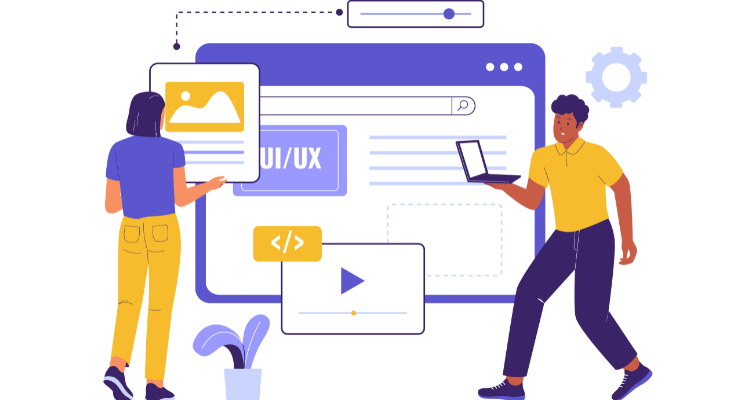Driver education is not the kind of world you expect a tech startup to modernize. Most people still find instructors through recommendations, phone calls, or flyers pinned to school boards. Parents text instructors to book lessons. Students track progress in paper logbooks. It is a system built on trust and routine.
So when NextDoorDriving launched a digital platform for driving lessons, people were curious but cautious. Learning to drive is not just functional. It is emotional, with nerves, excitement, responsibility, and a lot of uncertainty.
That meant the product’s UX design had to blend usability with empathy. If technology was going to work here, it had to feel human, calm, and supportive. This became the guiding principle for every design decision made.
Table of Contents
ToggleStudents Wanted Reassurance
One of the first things the NextDoorDriving team discovered through UX research and usability testing was that many students stopped right before booking their first lesson. It was not that they had changed their mind on wanting to learn how to drive. They were simply unsure about what the digital experience would bring next. It is a classic case of unclear user flow.
Would they be charged immediately? Would the instructor reach out? What if they picked the wrong time or felt unprepared? A lot of students also admitted they were nervous about their California drivers ed course online for teens because of everything around it.
What if the instructor were strict? What if they stalled the car? What if they did not even know how to sit properly behind the wheel? The process felt intimidating. The UX team identified this as an “anxiety moment.” To address this, the designers added guided tooltips, microcopy with a calm tone, and clear summaries before payment to lower the cognitive load.
Instructors Wanted Technology
Instructors had a very different concern. Many of them had been teaching for years, running their own schedules and pricing their own way. Their business was built on reputation and relationships. The last thing they wanted was a platform that tried to control their work or bury them in complicated settings.
They were willing to use technology. They had desires to have better scheduling, easy payments, less administration stress, and perhaps a means of recalling individual student progress.
For the UX team, this meant designing an interface that prioritized autonomy and simplicity. The instructor dashboard was built using card-based layouts and progressive disclosure. It showed only what was needed at a given time. This reduced visual clutter and helped instructors focus on their teaching.
What People Actually Needed Most

After listening to both sides, the design team realized the real issues were not technical. They were emotional. So the UX design strategy became about mapping the emotional journey alongside the user journey. Every touchpoint, from sign-up to lesson completion, had to feel predictable, encouraging, and transparent.
Here is what users needed more than anything:
- Students wanted clarity, not surprises, to know how booking works, what happens in their first lesson, and how close they are to being test-ready.
- Instructors wanted control, the ability to manage pricing, schedules, and which students they accepted without feeling monitored.
- Both wanted human connection, real photos, real feedback, honest information about instructors, and no robotic language or fake promises.
Designing the Platform to Feel Human
NextDoorDriving did not attempt to rebrand driver education but made it seem more approachable and accessible. The UX team’s mission was to make technology invisible so that users can focus on learning, not on figuring out how the platform works.
The booking was redesigned as easy and step-by-step. It showed pricing clearly and never pressured students to commit too early. Instructor profiles were updated to feel personal. They show real photos, years of experience, languages spoken, and reviews from past students.
The UX design of the platform itself focused on progressive learning and motivation. The interface displayed modules that visually tracked progress — turning each milestone (like mastering turns or parking) into an encouraging visual badge. This gamified structure was subtle but powerful. Students could see progress, reflect on it, and feel accomplished after each lesson.
To ease the nerves of the first lesson, students were given a brief preview of what they could anticipate even before they set foot in the car. It described the meeting point of the instructor, the documents to carry, and how the lesson would commence. UX copywriting played a big role here. Friendly, conversational microcopy replaced stiff instructions, making the process feel human.
Students also received a progress tracker that indicated what skills they had already learned and the next ones. After each lesson, a short summary was feedback. These summaries were designed as UX touchpoints that closed the learning loop.
On the platform, instructors had a dashboard to enable them to change availability, pricing, and location of the lessons. They could approve or decline students and add notes after lessons. Payments were tracked automatically, and receipts were sent without extra effort.
The entire platform was built on a responsive design system that adapted equally well to mobile and desktop. Accessibility was also a focus. Color contrast, readable typography, and clear iconography ensured inclusivity across age groups.
What Is the Lesson Here?
NextDoorDriving did not succeed because it built the most advanced platform. It succeeded because it listened. The company paid attention to fear, hesitation, pride, and trust. Strategic UX design has allowed them to address all these concerns in one go.
After all, great UX has nothing to do with trends or aesthetics. It is about reducing anxiety through clarity, designing control into every decision, and turning uncertainty into understanding. A teen booking their first driving lesson is not seeking innovation. They are looking for someone to say, “It is okay. You have got this.”
Let’s Wrap It Up
NextDoorDriving did not try to change what it means to learn to drive. They simply made the learning experience more human through UX design, intuitive navigation, reassuring communication, and emotionally intelligent interactions. They made the journey feel clearer, kinder, and more human. And sometimes, that is all people really need.









